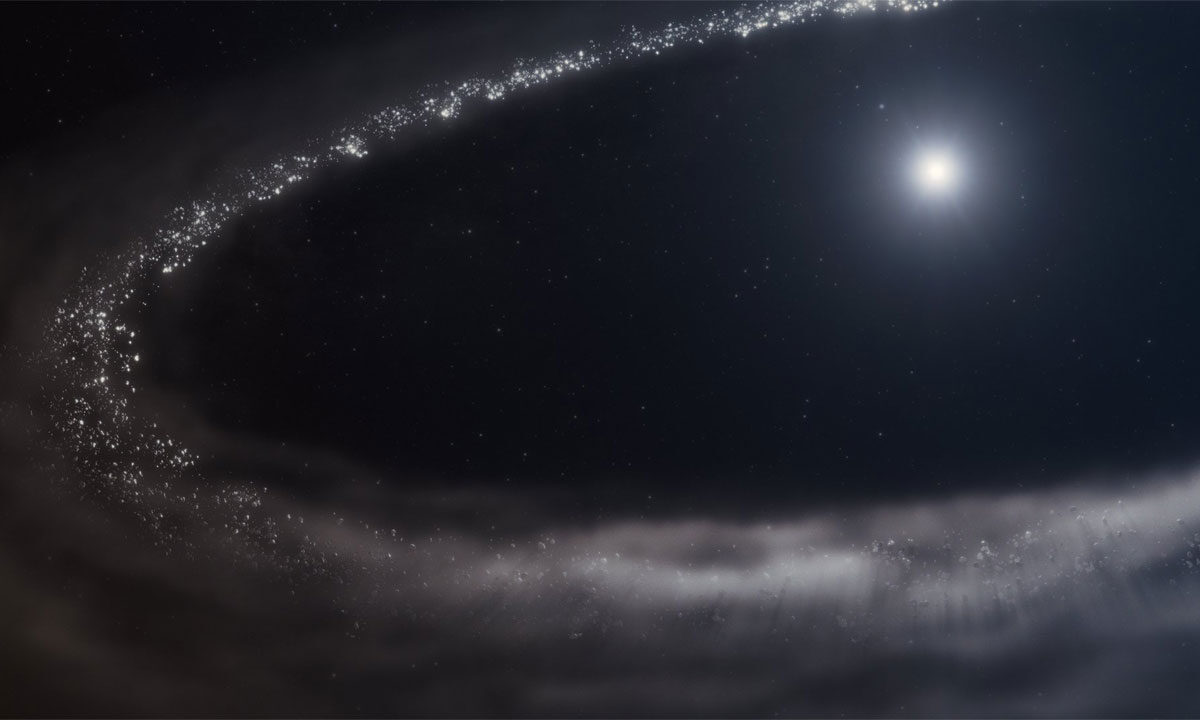NASA’s Webb Confirms Water Ice Around Distant Young Star — The Birthplace of New Worlds?
The finding, published in the journal Nature, marks the first unambiguous detection of crystalline water ice outside our solar system, located 155 light-years away.

In a landmark discovery, NASA’s James Webb Space Telescope (JWST) has confirmed the presence of frozen water in a distant planetary system, shedding light on how vital ingredients for life may be common in the universe. The finding, published in the journal Nature, marks the first unambiguous detection of crystalline water ice outside our solar system, located 155 light-years away.
Table of Contents
Water Ice Detected in a Young Debris Disk
Astronomers detected crystalline water ice in a dusty debris disk orbiting HD 181327, a young star that is just 23 million years old — significantly younger than our Sun, which is 4.6 billion years old. Using detailed spectra captured by the JWST, scientists observed that the ice is mixed with fine dust particles, forming tiny “dirty snowballs” within the disk.
“This is a major step forward,” said Chen Xie, lead author of the study. “Webb unambiguously detected not just water ice, but crystalline water ice — the same type we see in places like Saturn’s rings and the Kuiper Belt.”
Also Read: Massive Solar Storm Disrupts Satellites, Triggers Rare Auroras Worldwide
A Decade-Old Mystery Finally Solved
The presence of frozen water had been suspected as far back as 2008, when NASA’s now-retired Spitzer Space Telescope hinted at it. However, those earlier results were inconclusive. Webb’s far superior resolution and sensitivity have now confirmed those suspicions beyond doubt.
Why This Discovery Matters
Water ice plays a critical role in the development of planetary systems. It influences the formation of gas giants and can even be delivered to rocky planets via comets and asteroids, much like how Earth is believed to have received its water.
“This finding is important because it shows that the building blocks for habitable planets may be common in the universe,” said Christine Chen, co-author of the paper. “What’s most striking is that this data resembles what we’ve seen in our own Kuiper Belt.”
Opening New Doors in Planetary Science
HD 181327, the star hosting the icy debris, is slightly more massive and hotter than our Sun, with a correspondingly larger planetary system. The discovery enables astronomers to study the role of water ice in young, distant systems, offering clues about how planets — and potentially life — might form in other parts of the galaxy.
With this detection, the James Webb Space Telescope continues its mission of unraveling cosmic mysteries, not just within our solar system but across the vast expanse of the universe.
